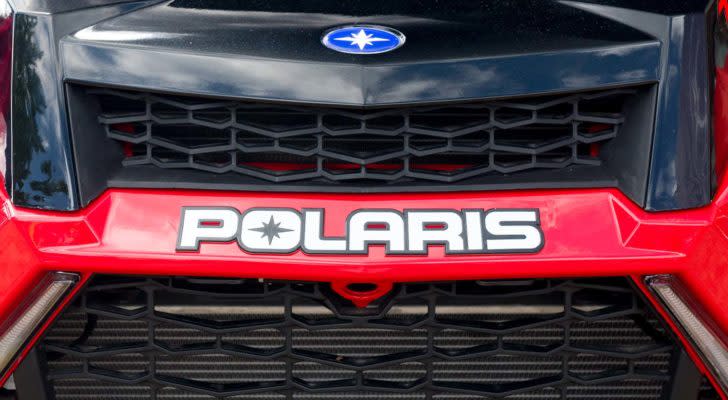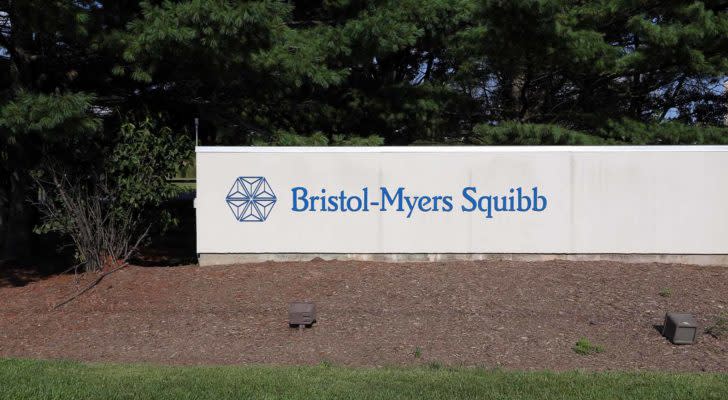3 Dividend Stocks for Strong Returns in 2024 and Beyond
The S&P 500 closed out a strong year, up more than 20% for 2023. For investors looking for the best dividend stocks in the New Year and beyond, we recommend companies with durable competitive advantages and growth potential.
In addition, substantial dividends help provide an additional return. Investors looking for high-quality dividend stocks should consider companies with high profitability and dividends that are sufficiently covered.
With that in mind, let’s look at three top dividend stocks for 2024 and beyond, with an expected annual return of at least 10% over the next five years.
InvestorPlace - Stock Market News, Stock Advice & Trading Tips
Brady Corp (BRC)

Source: Shutterstock
Brady Corp (NYSE:BRC) was founded in 1914 and manufactures and markets specialty materials. It generates annual revenue in excess of $1.3 billion. Brady Corporation’s products include absorbents, labels, pipes and valves, signs, tags, tapes and printers.
On Nov. 16, 2023, Brady Corporation reported results for the first quarter of fiscal year 2024 for the period ending Oct. 31, 2023. For the quarter, revenue grew 2.9% to $332 million, but this was $10 million less than expected. Adjusted earnings per share (EPS) of $1 compared favorably to 84 cents in the prior year and came in 5 cents above estimates.
Organic revenue grew 1.5% for the quarter, led by a 3.3% improvement in the Americas and Asia region and a 1.4% increase in Europe and Australia. Gross profit margin expanded 360 basis points to 51.7% for the period. The company returned $25.5 million to shareholders through dividends and share repurchases. Brady Corporation reaffirmed its prior outlook for fiscal year 2024 as well, with the company still expecting adjusted EPS in a range of $3.85 to $4.10 for the period.
Brady Corporation grew EPS at a rate of more than 10% annually over both the last decade and the last five years. We continue to expect earnings growth of at least 5% through 2029. We feel that this is an appropriate starting place for earnings growth due to the low base for EPS that occurred in 2013 and the high base expected for the current fiscal year.
Brady Corporation also has a consistently profitable business model in most cycles. This is due to the company’s durable competitive advantages. It maintains a leadership position in both of its main product categories through sufficient research and development investment.
Brady Corp has increased its dividend for 38 consecutive years and currently yields 1.6%. With a price-to-earnings (P/E) ratio of 14.7 against our fair value estimate of 19, the stock appears to be undervalued. Total returns could reach 11.6% per year over the next five years for BRC.
Polaris (PII)

Source: Ken Wolter / Shutterstock.com
Polaris (NYSE:PII) designs, engineers and manufactures snowmobiles, all-terrain vehicles (ATVs) and motorcycles. In addition, related accessories and replacement parts are sold with these vehicles through dealers located throughout the U.S. The company operates under 30-plus brands including Polaris, Ranger, RZR, Sportsman, Indian Motorcycle, Slingshot and Transamerican Auto Parts. The global powersports maker, serving over 100 countries, generated $8.6 billion in sales in 2022.
Polaris recently reported Q3 results, in which revenue decreased 3.8% to $2.25 billion. Adjusted EPS of $2.71 compared unfavorably to $3.25 in the prior year and was 2 cents less than anticipated. For the quarter, marine sales declined 48%, on-road fell 19%, and off-road, the largest component of the company, improved 6%. Sales for marine and on-road were lower due to a decrease in volumes. Off-road benefited from strength in snowmobile demand and gains in parts, garments and accessories. Gross margin contracted 127 basis points to 22.6%. Polaris updated guidance for 2023. The company now expects revenue to be up 3% to 5% for the year.
Over the long term, Polaris can generate growth via the ongoing replacement need for ATVs, snowmobiles, and similar vehicles, continued growth in international markets, bolt-on acquisitions, and margin expansion. Polaris enjoys a competitive advantage through its brand names, low-cost production and long history in various industries. This company is the leader in ATVs and No. 2 for snowmobiles and domestic motorcycles. We estimate PII can grow EPS by 4% per year over the next five years.
In addition, the stock has a dividend yield of 2.7%. PII has increased its dividend for 28 consecutive years. The stock is valued at a P/E of 9.7, compared with our fair value P/E of 15. Therefore, total returns are estimated to reach 15.3% per year over the next five years.
Bristol-Myers Squibb (BMY)

Source: Katherine Welles / Shutterstock.com
Bristol-Myers Squibb (NYSE:BMY) is a leading drug maker of cardiovascular and anti-cancer therapeutics, with annual revenues of over $40 billion. The company’s top three selling products are Revlimid, Opdivo and Eliquis.
In the 2023 third quarter, revenue declined 2.2% to $10.97 billion, which was in line with estimates. Adjusted EPS of $2 grew slightly from $1.99 in the prior year and was 23 cents more than expected. Adjusting for unfavorable currency exchange, revenue was down 3% for the quarter.
Revenue for Eliquis, which prevents blood clots, grew 2% to $1.8 billion. Eliquis has become the top oral anticoagulant in several international markets since 2019 and had nearly $12 billion in revenue for 2022, which was a 10% increase from the prior year. Opdivo revenue increased 4% to $1.2 billion due to demand across newer indications. Revenue for Orencia, which treats rheumatoid arthritis, improved 5% to $925 million. We expect the company to grow EPS by 3% per year over the next five years.
For 2023, BMY expects adjusted EPS to be in the range of $7.50 to $7.65 for 2023. This means the company is highly profitable, with more than enough cash flow to pay a significant dividend to shareholders. BMY stock currently yields 4.7%.
BMY stock also looks undervalued, with a P/E of 7 compared to our fair value P/E of 11. The combination of expected EPS growth, dividends and a rising P/E multiple results in expected annual returns above 16% over the next five years for BMY.
On the date of publication, Bob Ciura did not hold (either directly or indirectly) any positions in the securities mentioned in this article. The opinions expressed in this article are those of the writer, subject to the InvestorPlace.com Publishing Guidelines.
More From InvestorPlace
ChatGPT IPO Could Shock the World, Make This Move Before the Announcement
Musk’s “Project Omega” May Be Set to Mint New Millionaires. Here’s How to Get In.
The Rich Use This Income Secret (NOT Dividends) Far More Than Regular Investors
The post 3 Dividend Stocks for Strong Returns in 2024 and Beyond appeared first on InvestorPlace.
